|
Terrorist Videos
Handheld video cameras were occasionally used to record fighting in Afghanistan and other regions where Islamic extremists were active, such as the Philippines and around southeast Asia, but such taping was rare. When the Soviet jihad ended in 1989, video also enhanced training in terrorist techniques such as bomb-making. These were still largely internal uses. The explosion of jihadist video as a medium for the masses didn't take place until after the September 11 attack on the United States. Major media outlets endlessly replayed the shocking footage of hijacked jets smashing into the World Trade Center and footage of the devastated Pentagon building. Terrorist groups and their sympathizers recorded these images and digitized them. Soon, footage of the attacks went into wide circulation over the Internet, often intercut with speeches by terrorist leaders like Osama bin Laden and Ayman Al-Zawahiri. After a while, the videotaped speeches evolved into direct communiques in which terrorist leaders addressed their followers -- or their enemies.
With the improved technology, the jihadists were able to reach a fairly substantial Muslim and Arabic audience online. Although Western journalists took notice, the public barely blinked until terrorists began beheading captives. The first victim so memorialized was Wall Street Journal reporter Daniel Pearl, who was beheaded on a video made in Pakistan by al Qaeda's military chief at the time, Khalid Shaikh Mohammed.
Although there are a few dedicated Islamist sites that distribute jihadi videos, it's problematic keeping these sites online for very long, since ISPs and Western governments have active programs in place to discourage such content. More typically, a video will be linked from an Arabic language message board to another server where the actual video is stored. There are a handful of standing FTP servers dedicated solely to Islamist material, but more often terrorists use temporary and anonymous storage solutions like yousendit.com. Recently, some terrorist Webmasters have begun hacking into sites with loose upload policies where they can store the videos until someone notices their presence and deletes them. Such links are ephemeral at first, but they snowball once released as sympathizers, news outlets, splatter-and-gore Web sites and anti-terrorist organizations immediately download and mirror them for free. A particularly newsworthy video can be mirrored hundreds of times within a matter of days. Because the videos are so easy to produce, there is not a lot of consistency in content or format. However, the most widely distributed videos tend to fall into a few distinct categories. Propaganda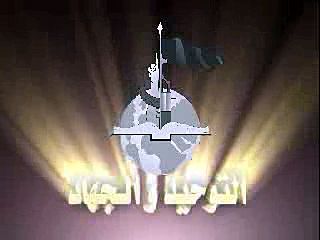 The typical terrorist propaganda video is an overproduced montage of powerful still and moving images set to an Islamic religious chant. The images can be just about anything -- pictures of insurgents in action; lovingly crafted portraits of bin Laden, Zawahiri and Abu Musab al-Zarqawi; any of the unforgettable September 11 scenes; and pictures of Iraqis suffering innumerable indignities at the hands of Americans or Israelis.
The typical terrorist propaganda video is an overproduced montage of powerful still and moving images set to an Islamic religious chant. The images can be just about anything -- pictures of insurgents in action; lovingly crafted portraits of bin Laden, Zawahiri and Abu Musab al-Zarqawi; any of the unforgettable September 11 scenes; and pictures of Iraqis suffering innumerable indignities at the hands of Americans or Israelis. It's not uncommon to see images of Abu Ghraib prison abuses ripped from media broadcasts, in addition to footage of soldiers killing, maiming and humiliating Iraqis in a wide variety of settings. Similar images of Israelis brutalizing Palestinians abound. For some reason, all these violent scenes are extremely effective at demonizing the "enemies of Islam" (as the terrorists see them), but the equally graphic and brutal videos of insurgents and terrorists beheading innocent civilians don't seem to generate as much of a backlash as one might hope (see below). Running between five minutes and an hour in length, the propaganda films are sometimes of very high quality but more often look extremely amateurish. They tend to feature absurdly excessive computer-generated special effects and titles. Remember way back when you got your first copy of Photoshop, and for the first six months you couldn't resist using six different fonts on every page, with half the words dropshadowed in the most bilious colors you could find? It's like that. Sometimes the titles -- featuring Arabic words and terrorist logos cartwheeling around the screen -- last considerably longer than the actual content of the video. Perhaps the most bizarre example of extremist propaganda is the rap video, Dirty Kuffar, credited to "Sheikh Terra and his Soul Salah Crew." (Kuffar is Arabic for infidel or unbeliever.) In the video, hip-hop jihadis bust raps over a montage of dead American troops and collapsing buildings. The beat is catchy, but the lyrics (in Arabic and English) are pretty much what you would expect:
Dirty Kuffar wherever you are; Dirty Kuffar is just one example of a propaganda machine in the process of retooling itself for a Western audience. A recent spate of video messages have featured English speakers and Westernized formats, such as an English-language "Message from the Iraqi Resistance" presented with newsreel-style delivery and an accompanying orchestral score (a rarity since many fundamentalist extremist sects disapprove of non-religious music). Osama bin Laden chose to address the United States directly just before the 2004 presidential election, and in early 2005, new jihadist videos began to appear that featured clips of George W Bush speaking about Iraq interspersed with violent scenes and footage from the front lines.
Martyrdom Martyrdom videos come in two flavors. First, there are video wills, recorded by suicide attackers before they embark on their missions. These are typically low-rent affairs, simply a terrorist talking to the camera about his motivations for carrying out his imminent attack. The most famous of these is the video will of Ahmed al-Haznawi, one of the September 11 hijackers, who vowed to attack Americans on their home ground and end the "humiliation and subjugation" of Muslims. Video wills have also been left by other terrorists whose attacks were less spectacular.
Martyrdom videos come in two flavors. First, there are video wills, recorded by suicide attackers before they embark on their missions. These are typically low-rent affairs, simply a terrorist talking to the camera about his motivations for carrying out his imminent attack. The most famous of these is the video will of Ahmed al-Haznawi, one of the September 11 hijackers, who vowed to attack Americans on their home ground and end the "humiliation and subjugation" of Muslims. Video wills have also been left by other terrorists whose attacks were less spectacular. The other type of martyrdom format is a tribute video in which others talk about the deceased in glowing terms, accompanied by video clips and still pictures of the individual in question. The nineteen September 11 hijackers have been the subject of endless tributes, usually featuring photos originally distributed by the U.S. government and accompanied by news footage of 9/11. One series of videos released under the name Shohada (Arabic for "martyr") appears to be a recurring series highlighting the sacrifices of various terrorists for the cause of radical Islam. The Shohada videos are hosted by Arabic males sitting at a Johnny Carson-style desk while inset pictures and graphics highlight his topics. (Some versions of the show are closer to the evening news.) Instead of Johnny's friendly coffee cup, however, this talk-show host's desk is covered with guns, grenades and like paraphernalia.
Documentaries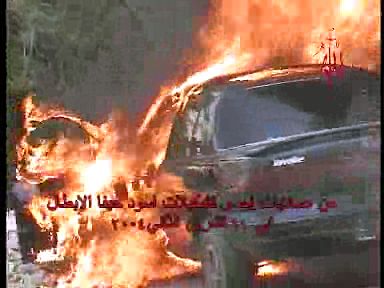 The most common terrorist videos feature documentary-style footage of terrorist attacks or insurgent military operations, the latter mostly taking place in Iraq and the Palestinian territories. The videos usually feature a few brief titles in Arabic, then cut right to the action.
The most common terrorist videos feature documentary-style footage of terrorist attacks or insurgent military operations, the latter mostly taking place in Iraq and the Palestinian territories. The videos usually feature a few brief titles in Arabic, then cut right to the action. The action itself is often blurry, confused and tedious. Truly exciting battle scenes don't lend themselves to amateur filmmaking. It's much easier to show footage of guys shooting mortars, which are presumably aimed at some infidel target or another. Some ambitious auteurs have tried to capture terrorist attacks on airplanes with land-to-air missiles. The results are usually pretty disappointing (from a strictly cinematic perspective). For all their flaws, however, these videos are pretty striking as a counterpoint to the propaganda images that have glutted the Western media. Donald Rumsfeld might try to tell you that the situation in Iraq is under control, but it's a little tough to credit that when you can watch jihadis toting shoulder-mounted missiles freely down the streets of Ramadi, while Iraqi civilians line the sidewalks to cheer them on. Remember when Dick Cheney told us that the Iraqis were going to welcome Americans with flowers?
Hostages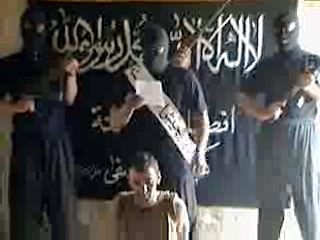 All of the formats above have made an impact on target audiences in the Middle East and beyond, but terrorist videos didn't really start to affect audiences in the West until a spate of grisly hostage videos started to flow out of Iraq.
All of the formats above have made an impact on target audiences in the Middle East and beyond, but terrorist videos didn't really start to affect audiences in the West until a spate of grisly hostage videos started to flow out of Iraq. The first few beheading videos featured Westerner workers who had been kidnapped by the Zarqawi group. Usually, the group would first release footage of the hostage in captivity, often forcing them to read statements or allowing them to make pitiful cries for help. Some of the hostages were softened up for this task by being forced to view their fellow captives being decapitated. The second video, generally, is the money shot, featuring the terrorists reading political statements in Arabic, followed by a beheading. In most of the videos, the captives are decapitated with long, serrated knives, in order to make the experience as ugly and painful as possible. The executioners sometimes pause halfway through, allowing the viewer to witness the victim trying to breathe through a severed windpipe before the dirty work is finished. Initially, there was a certain amount of backlash against the brutality of the videos among moderate Muslims and even many fundamentalists. This petered out pretty quickly, for a number of reasons, including increased resentment of the U.S. occupation, viewers becoming jaded to atrocities within the war zone and some degree of backtracking by the camera-toting militants.
The victim profile has also shifted, partly due to severe new restrictions on the movement of Americans in Iraq. Recent videos have featured the execution of Turkish truck drivers and Iraqi civilians accused of collaborating with the U.S. occupation. Chinese, Italian, Japanese, Egyptian, British, Sudanese, Bulgarian and Korean hostages have been paraded around on video, their captivity often accompanied by demands that their home governments withdraw all support from the provisional Iraqi government. In the run-up to the election on 30 January 2005, which went off improbably well, a string of videos flowed from Iraq like arterial blood, including all mannner of shootings, beheadings, stabbings, bombings, missile attacks, mortar attacks, kidnappings, political assassinations and the like. Election workers were killed on video; even candidates were kidnapped and assassinated for the Internet's "airwaves." Five minutes after the election concluded, Abu Musab al-Zarqawi declared an all-new and renewed Holy War against the new government, now dominated by Shi'ite Muslims, who just happen to be the deadly enemies of the mostly Sunni terrorist cells all over Iraq. In other words, the star-making machinery of the Iraqi resistance won't shut down any time soon. Look for Zarqawi's debut at next year's Sundance Festival.
|
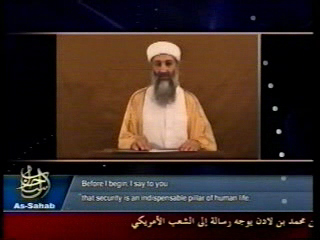
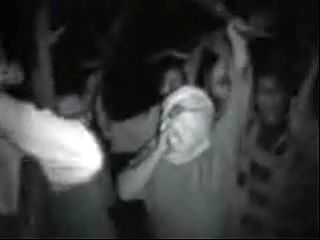
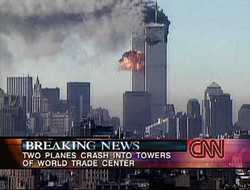 As handheld video recorders became cheaper and more readily available from the late 1980s on, Islamic extremist and terrorist networks quickly realized their utility. Audio and video tape were used at first to disseminate political and ideological propaganda, mostly incendiary speeches by radical clerics, which were sold and distributed at conferences and mosques.
As handheld video recorders became cheaper and more readily available from the late 1980s on, Islamic extremist and terrorist networks quickly realized their utility. Audio and video tape were used at first to disseminate political and ideological propaganda, mostly incendiary speeches by radical clerics, which were sold and distributed at conferences and mosques.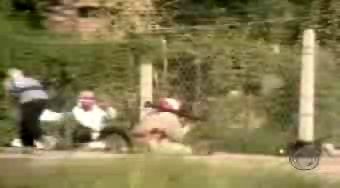
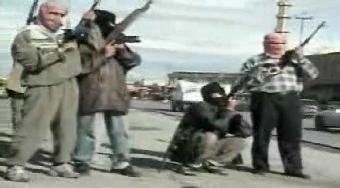
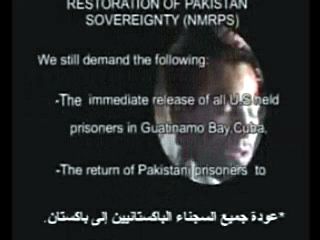 Horrific as the Pearl killing was, it was treated as an anomaly until the release of a video depicting the beheading of
Horrific as the Pearl killing was, it was treated as an anomaly until the release of a video depicting the beheading of 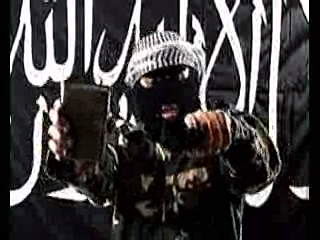
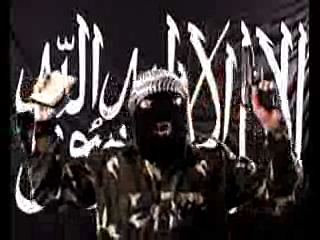
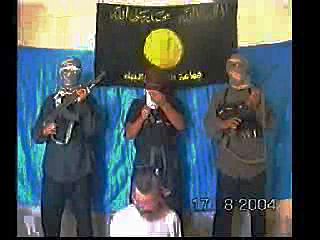
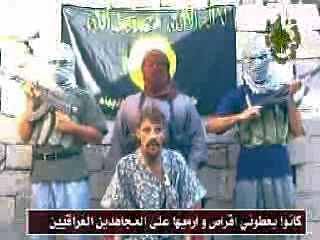
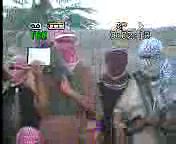 The beheading and execution videos quickly became a hot commodity online, making the rounds of political and conspiracy Web sites on the one hand, and snuff-film archives on the other. Merchants in Iraq can't keep beheading DVDs on the shelves, a sure sign that the initial backlash has faded into near-extinction. Although the method of execution has become less severe in some videos, the body counts have risen sharply. It's not uncommon for a video to feature the execution of three, five, or ten people at a time.
The beheading and execution videos quickly became a hot commodity online, making the rounds of political and conspiracy Web sites on the one hand, and snuff-film archives on the other. Merchants in Iraq can't keep beheading DVDs on the shelves, a sure sign that the initial backlash has faded into near-extinction. Although the method of execution has become less severe in some videos, the body counts have risen sharply. It's not uncommon for a video to feature the execution of three, five, or ten people at a time.